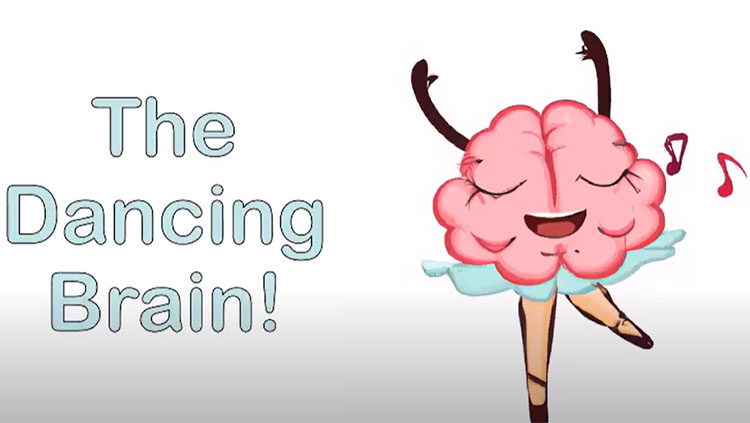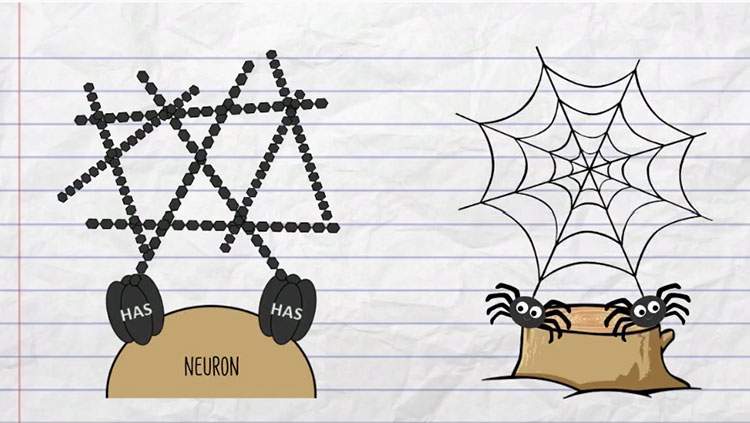His and Hers: Sex Differences in the Brain
- Published7 May 2014
- Reviewed7 May 2014
- Author Allison Curley
- Source BrainFacts/SfN
For years before the U.S. Food and Drug Administration (FDA) came out with its recent recommendation that women cut the dose of Ambien and related sleeping medicines in half, there were reports of patients engaging in strange, sleepy next-day behaviors. However, it wasn’t until scientists took a closer look at the data showing the amount of the drug still in the blood of male and female users when they awoke the next day that they recognized one reason why.
As it turns out, women break the drug’s active ingredient zolpidem down slower than men do. Since they were taking the same dose of the drug as men, they were waking up with more of the drug still in their bodies. Studies would later reveal that these elevated levels increased their risk of adverse events, like car accidents.
Why did it take years to recognize sex matters when it comes to sleep medication doses? Because many assumed “sex cannot matter that much,” explains Larry Cahill, a neuroscientist at the University of California, Irvine who studies sex differences in the brain.
Traditionally, in both human and animal research, males have been the research subject of choice because their hormone levels do not vary cyclically the way that they do in females. Many researchers assumed that fluctuating hormone levels in females would make it more difficult to draw conclusions from their findings, and any findings in male study subjects translated to females. However, recent analysis of numerous studies comparing male and female mice show studies with females show no greater variability than those with males.
Additionally, as the sleep medication study suggests, “The assumption that you can safely ignore sex [when developing treatments] is wrong,” Cahill says. In fact, a growing number of studies highlighting sex differences in the brain are beginning to turn this concept on its head.
Sex differences start early
Early research on sex differences in the brain began with animal studies of the hypothalamus, the brain area involved in feeding, stress, and mating behaviors. Just as early exposure to the sex hormone testosterone guides the “masculinization” of the body — including the development of the male reproductive tract and external genitals — scientists discovered it also influences the development of the brain and behavior. When researchers exposed female guinea pigs to testosterone while still in the womb, they found that the animals displayed mating behaviors more similar to males later on in life. In contrast, female guinea pigs exposed to testosterone later in life showed typical female mating behaviors.
Researchers have since identified structural differences in male and female brains in animals. In rats, the volume of a large cluster of cells in the preoptic area of the hypothalamus is greater in males. In contrast, the anteroventral periventricular nucleus — a section of the hypothalamus that helps to regulate the ovulatory cycle — is larger in females. Other studies have found that the length and complexity of dendrites (the branch-like structures neurons use to receive information) in the ventromedial nucleus of the hypothalamus also differs between males and female rats, suggesting there may be sex differences in brain circuitry.
Sex and memory
Scientists are now learning sex differences are present beyond the regions of the brain that are involved in mating.
Animal research indicates the presence of sex differences in the hippocampus — an area involved in storing memories and the spatial mapping of an environment. In addition, magnetic resonance imaging (MRI) studies of people have found that, when compared to the total volume of the brain, the hippocampus is larger in women than men. In contrast, the amygdala — an area crucial to the formation of emotionally charged memories — tends to be larger in men.
Other studies suggest that there are differences in how these brain regions function in men and women, perhaps affecting how they respond to stress. For instance, when researchers asked men and women to watch violent films, they discovered that women display greater activity in the amygdala on the left hemisphere of the brain while men show greater activity on the right. Regardless of sex, the more active the amygdala, the more the participant remembered when asked about the violent film a few weeks later.
When scientists gave participants a drug that dampens amygdala activity before presenting them with an emotional story, they found that men had a more difficult time remembering information central to the emotional story line, while women had a harder time recalling peripheral story details one week later. These hemispheric activity differences may explain why men tend to recall the gist of an emotional event, while women tend to remember the specific details.
Sex matters for understanding disease
Generalizing animal research findings on sex differences to humans remains a significant challenge, as does determining the ways in which the varying life experiences of men and women affect the brain, says Michigan State University neuroscientist Cheryl Sisk, who studies the role of hormones on adolescent brain development. Still, many researchers believe that studying sex differences in the brain will one day uncover new information about brain illnesses that affect the sexes differently.
For example, boys are nearly four times as likely as girls to be diagnosed with autism and attention deficit hyperactivity disorder (ADHD) early in life. In contrast, depression and anxiety, which are more commonly diagnosed after puberty, occur almost twice as frequently in women as men. A recent study also suggests that APOE4 — a gene variant commonly associated with heightened risk of developing Alzheimer’s disease — confers greater disease risk to women.
According to Margaret McCarthy, who studies the effects of hormones on brain development at the University of Maryland School of Medicine, sex differences in the prevalence of these and other brain illnesses suggest “something is different in the way the brain is developing that is making it more vulnerable at different times for males versus females.”
In cases where a disease is affecting one sex more than the other, “one sex is protected from disease more than the other,” McCarthy explained in a 2012 article in The Journal of Neuroscience. “Thus, identifying the sex-specific protective agents could lead to better understanding of potential therapies, or identification of new drug targets,” she wrote.
CONTENT PROVIDED BY
BrainFacts/SfN
References
Cahill L. A half-truth is a whole lie: on the necessity of investigating sex influences on the brain. Endocrinology. 153(6), 2541–2543 (2012).
Giedd JN, Raznathan A, Mills KL, Lenroot RK. Review: magnetic resonance imaging of male/female differences in human adolescent brain anatomy. Biology of Sex Differences. 3(1), 19 (2012).
Goldstein JM, Seidman LJ, Horton NJ, Makris N, Kennedy DN, et al. Normal sexual dimorphism of the adult human brain assessed by in-vivo magnetic resonance imaging. Cerebral Cortex. 11, 490-497 (2001).
Griffin GD, Flanagan-Cato LM. Sex differences in the dendritic arbors of neurons in the hypothalamic ventromedial nucleus. Physiology and Behavior. 97, 151-156 (2009).
Huang GZ, Woolley CS. Estradiol acutely suppresses inhibition in the hippocampus through a sex-specific endocannabinoid and mGluR-dependent mechanism. Neuron. 74(5):801-8 (2012).
Lenz KM, Nugent BM, McCarthy MM. Sexual differentiation of the rodent brain: dogma and beyond. Frontiers in Neuroscience. 6, 26 (2012).
McCarthy MM, Arnold AP, Ball GF, Blaustein JD, De Vries GJ. Sex differences in the brain: the not so inconvenient truth. The Journal of Neuroscience. 32(7), 2241-2247 (2012).
Morris JA, Jordan CL, Breedlove SM. Sexual differentiation of the vertebrate nervous system. Nature Neuroscience. 7(10):1034-9 (2004).
Phoenix CH, Goy RW, Gerall AA, Young WC. Organizing action of prenatally administered testosterone propionate on the tissues mediating mating behaviour in the female guinea pig. Endocrinology 65:369-382 (1959).
Prendergast BJ, Onishi KG, Zucker I. Female mice liberated for inclusion in neuroscience and biomedical research. Neuroscience and biobehavioral reviews. 40:1-5 (2014).


















